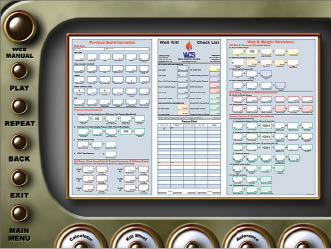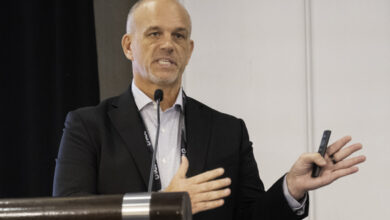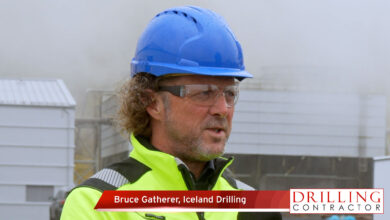Web-, computer-based well control program provides cost-driven, self-paced training

By Barry Cooper, Well Control School
As we address the uncertainties of future activities in the oil and gas industry, the constant remains with the need to drive down lifting costs for operators. Technology is an important element of the equation by enhancing overall performance of personnel and companies that strive to meet the challenging needs of lowering lifting costs. We have seen drastic changes in technology-driven drilling rigs, along with supporting services and equipment. The training sector has been impacted as well, resulting in e-learning training programs.
E-learning with SYSTEM 21 was developed as a competency-based well control training program that meets the requirements of IADC’s WellCAP. It is available as a web-based and computer-based program. The training software contains more than 2,000 well control-related topics and skills, providing training, testing, simulations and overall employee competence. Interactive tasks and role-playing will help students to become familiarized with well control concepts while emphasizing correct procedures and teamwork. Computer graphics are used to dramatically depict downhole conditions, such as deepwater and horizontal drilling environments.
Students must successfully complete each module of the program before they are allowed to proceed to the next learning module. Skill levels are recorded as students work toward obtaining a WellCAP certificate in drilling, well workover, well completion and/or well intervention servicing for coiled tubing, snubbing and wireline in either surface or subsea stacks.

Course contents, along with pre-test and post-test reports generated by the program, can help companies to conform to requirements set by ISO-9000 or their training plan by tracking and measuring key performance indicators (KPIs) related to training, record keeping and quality audits.
Additionally, a stuck pipe prevention course and a GAP analysis program have been developed. The stuck pipe prevention program is an interactive multimedia course to improve the drilling team’s understanding of stuck pipe, physical/economic impacts and methods for preventing and/or freeing stuck pipe. The GAP analysis program allows companies to evaluate the competency levels of employees.
E-LEARNING
Continuous training is an important aspect supporting a competently skilled workforce. Because the web-based and computer-based versions of this program are readily available 24/7/365, it allows for training that is convenient and quick to access.
With e-Learning, students must completely understand and pass each module of the course in order to proceed to the next module. This ensures that the person completing the training has thoroughly studied and understood the material. It can also be beneficial over instructor-led courses. An instructor may have a tendency to gloss over areas of the subject matter they are not familiar with and/or comfortable addressing; this program eliminates that concern.

Another critical area is standardization; e-Learning will provide the same training to all students in any area of the world.
Moreover, companies are demanding lower cost-driven training programs that deliver long-term value. This program requires a lower training budget by eliminating the need to travel to learning centers. Additionally, the worker does not have to leave his/her work station, important in times of reduced staffing. A person can train anywhere in the world at any time of the day.
Further, these courses are self-paced. A more experienced student will be able to work through the training modules a little quicker than a less experienced student. This can eliminate the boredom that can be experienced in a classroom setting in which an instructor would normally have to slow the pace of a course to accommodate less experienced students.
The training program produces pre-test and post-test evaluations of the student’s competency skills. It also records the time it took for the student to complete each module, which effectively tracks and measures the difficulty in any particular training topic. Administrators and managers will have access to these records.
BENEFITS FROM E-LEARNING

Numerous studies and surveys have shown that companies that train their personnel have more productive employees and are, in effect, more productive companies. Companies that are more productive are also more profitable. Training lends support to a competent workforce of a company along with building morale amongst its workers. Certified personnel also reduces a company’s insurance premiums because there are statistically fewer accidents and injuries with competent personnel.
Furthermore, companies with competently trained, certified personnel are generally able to command a higher premium and demand for their services. Companies that are committed to training will reap the rewards.
Barry J Cooper is manager – business development for Well Control School.





I do agree with Barry about e-learning for this category of courses and trainings. However, it is very important to take into considerations learner ability and drilling organization’s culture. Based on the personal experience, this method of training is still viewed as not the best option in the international drilling organizations, due to the language barrier, Computer illiteracy of the workforce concerned, and the shared tacit assumptions that drilling key leaders have about learning and training business.
I’m not sure what would keep me from ordering this program and then paying someone to complete it for me. Who is watching this hen-house anyway?